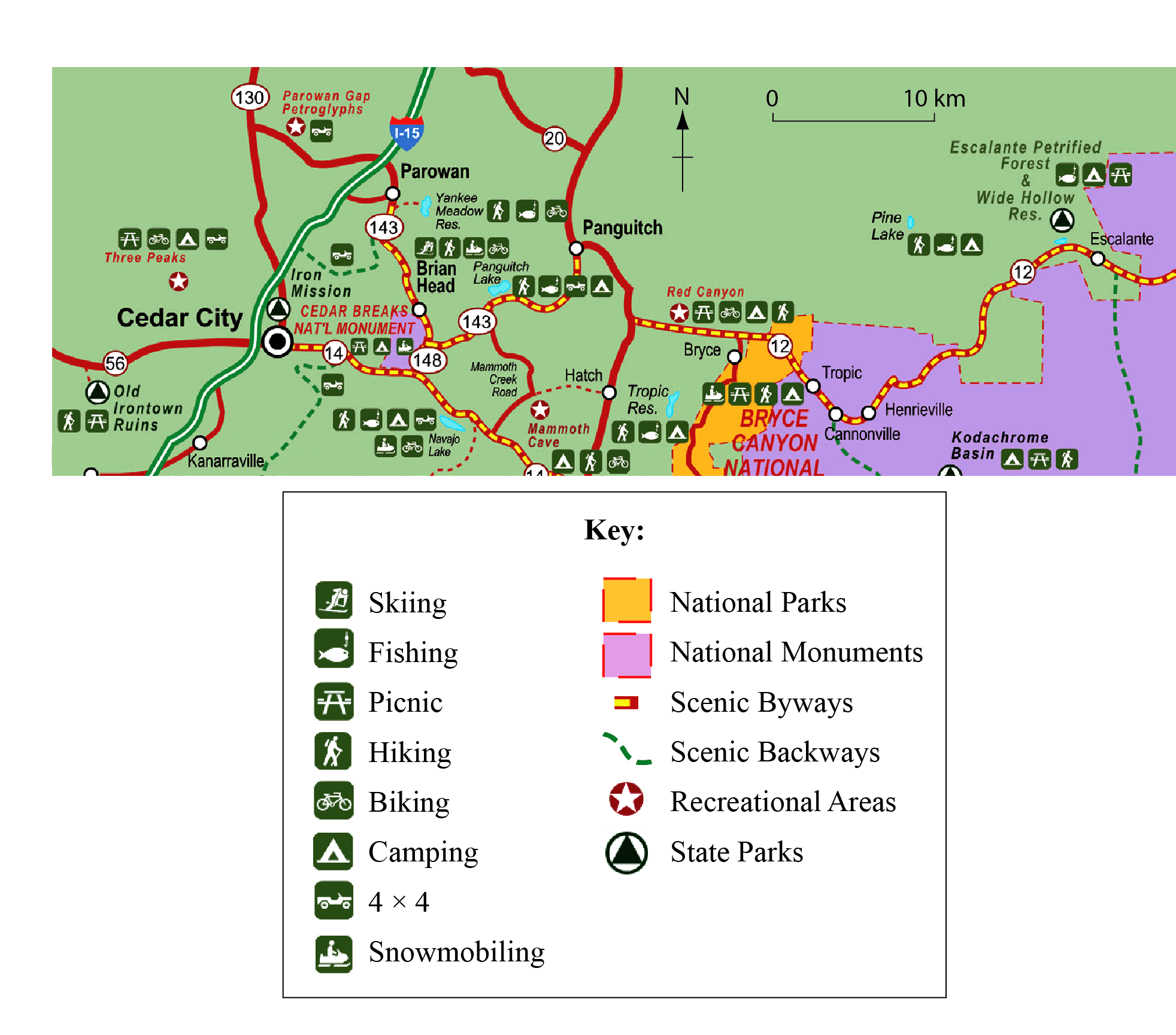| Date | May 2012 | Marks available | 6 | Reference code | 12M.2.bp.9 |
| Level | SL and HL | Paper | 2 | Time zone | |
| Command term | Explain | Question number | 9 | Adapted from | N/A |
Question
The map shows an area in Utah, USA, where tourism is important.
[Cedar City-Brian Head Tourism Bureau. Used with permission.]
Identify one possible heritage tourism location and one possible ecotourism location shown on the map and justify your choice.
Explain how the carrying capacity may be different for two of the activities at Three Peaks recreation area.
Discuss the factors affecting the distribution of leisure facilities in urban areas.
Markscheme
Ecotourism focuses on the natural environment; heritage tourism is based on a historic legacy.
Heritage tourism locations include:
- Old Irontown Ruins – clearly a historical site, celebrating the industrial history of the area
- Parowan Gap Petroglyphs – petroglyphs represent the culture and activities of ancient societies; the attraction is historical.
Ecotourism locations include:
- Red Canyon
- Yankee Meadow Reservoir.
Other suggestions that are suitably justified are equally acceptable.
1 mark should be awarded for the site location with the remaining 1 mark awarded for the valid justification.
Answers may distinguish between different kinds of carrying capacity (environmental/perceptual). Carrying capacity is defined as the maximum number of people that a site/event can satisfy at one time. If this limit is exceeded, then there may be immediate impact on the environment (for example, erosion caused by mountain biking and 4×4 use) or some users consider usage excessive (for example, a picnic spot that becomes overcrowded and overused). Award up to 2 marks for each well developed idea, reserving the final 2 marks for demonstrating a clear understanding of the term “carrying capacity”.
A maximum of 4 marks should be awarded if variance in carrying capacity is identified but not explained.
Leisure includes sport, tourism and recreation. Candidates are expected to include a range of factors that could include: bid rent, population densities, socio-economic influences, government grants/policies, cultural influences, accessibility, transport, demographic considerations, physical factors (for example, rivers for rowing), availability of land.
Some candidates may illustrate differences between urban areas in economically rich and poor regions/countries. While examples are not a specific requirement of the question, those answers that provide supporting examples are likely to access the higher markbands.
Marks should be allocated according to the markbands.
Examiners report
Candidates had little difficulty with this question.
Some candidates wandered away from the Three Peaks recreation area in this question and relatively few responses showed a clear understanding of "carrying capacity", even in cases where mostly accurate comments had been made about the two activities chosen.
Answers were very disappointing, with few candidates finding an appropriate structure for their discussions. Case studies were generally missing, examples superficial, and there was a reluctance to identify or discuss more than two or three factors or types of leisure activity, despite the very wide range of possible valid choices.

